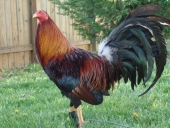I'm having trouble with my Permies user account. I tried to send a message to "moderator", but it didn't go through because it said
" Error.
Could not determine the user id. Please check if you typed the display name correctly and try again. "
My user name is Dragonlaurel but the posts I made are now labeled by "dragonlaurelMcCoy". I do actually live in the Ouachitas, so that part is still the same.
Could my user account have been hacked? I just changed my password, in case it was.
Here's one of the posts, in case it helps:
dragonlaurel McCoy
Joined: Jan 02, 2011
Posts: 9
Location: Ouachita Mts. - Ar.
posted Tuesday, June 21, 2011 01:18:52
This sounds like a great idea. I'm newer to permaculture and figuring out good guilds -more easily- would be a huge help. Many of the permaculture favorites are more tropical than I can use. I would love to have plants narrowed down by climate. People with greenhouses could still click/type those conditions.
It would be nice if you could narrow criteria by any of these:
native plants of that region
moisture preference - desert, semi-dry, Mediterranean, rain forest, wetlands
shade/sun needs
soil types- sandy, rocky, clay, and deep topsoil or thin layer
deer/critter/bug resistance or tolerance
edible for humans or livestock - mention if it can be toxic
A selection option that lets you see stuff for areas with similar conditions would be great. (For example - French immigrants started wineries in the Ozarks before the Prohibition days, because the growing conditions were similar.
I don't want to overwhelm you. Just giving ideas on options that appeal to me. I'm not a techie, so I don't know which ones would be easy or hard to do.




